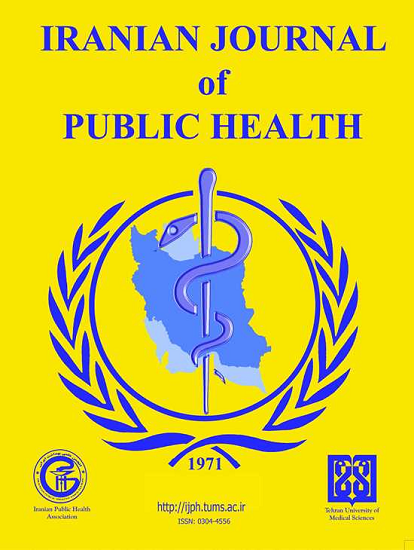A Case Study on Trends in Acute Respiratory Illnesses and Influenza in Singapore: Pre-, During, and Post-COVID-19 Pandemic
Abstract
Background: We investigated trends in acute respiratory illnesses and influenza activity in Singapore throughout the COVID-19 pandemic.
Methods: Publicly available data from the Ministry of Health, Singapore was used to estimate the number of daily acute respiratory illnesses (ARI) and influenza cases between 2019 and Jun 2023. Overseas travel activity was obtained from the Department of Statistics, Singapore. Trends in ARI and influenza activity during different phases of the COVID-19 pandemic with changes in key public health measures were compared.
Results: Pre-pandemic influenza activity exhibited seasonal peaks in Jan and Jul, with daily estimated cases exceeding 40 during these periods. During the early pandemic, influenza cases declined sharply to close to zero and remained at these levels until mid-2022, even after public health measures were eased. ARI cases followed a similar initial decline but gradually returned to pre-pandemic levels by 2023, with peaks occurring outside the usual seasonal pattern. These trends corresponded with phases of public health measures, including mask-wearing and travel restrictions.
Conclusion: Several hypotheses for these contrasting trends were explored, including increased public health awareness, higher influenza vaccination rates, and potential virus-virus interactions.
2. Bonacina F, Boëlle PY, Colizza V, Lopez O, Thomas M, Poletto C (2023). Global patterns and drivers of influenza decline during the COVID-19 pandemic. Int J Infect Dis, 128:132-139.
3. Pendrey CGA, Strachan J, Peck H, et al (2023). The re-emergence of influenza following the COVID-19 pandemic in Victoria, Australia, 2021 to 2022. Euro Surveill, 28 (37):2300118-2300118.
4. Centers for Disease Control and Prevention (2023). Influenza Activity in the United States during the 2022–23 Season and Composition of the 2023–24 Influenza Vaccine. https://www.cdc.gov/flu/whats-new/22-23-summary-technical-report.html
5. European Centre for Disease Prevention and Control (2023). Seasonal influenza - Annual Epidemiological Report for 2022/2023. https://www.ecdc.europa.eu/en/publications-data/seasonal-influenza-annual-epidemiological-report-20222023
6. National Centre for Infectious Diseases (updated 2024). Weekly Infectious Diseases Bulletin. https://www.moh.gov.sg/others/resources-and-statistics/infectious-disease-statistics-2024-weekly-infectious-diseases-bulletin
7. Ministry of Health, Singapore. Weekly Infectious Diseases Bulletin. https://www.moh.gov.sg/others/resources-and-statistics/
8. Soo RJJ, Chiew CJ, Ma S, Pung R, Lee V, Lee VJ (2020). Decreased Influenza Incidence under COVID-19 Control Measures, Singapore. Emerg Infect Dis, 26 (8):1933-1935.
9. Ministry of Health, Singapore (2020). End of Circuit Breaker, Phased Approach to Resuming Activities Safely. https://www.moh.gov.sg/newsroom/end-of-circuit-breaker-phased-approach-to-resuming-activities-safely
10. CNA (c2024). The Circuit Breaker: A Decisive Break to Curb the Spread.
11. Singapore Government (2020). Ending circuit breaker: phased approach to resuming activities safely. https://www.moh.gov.sg/newsroom/end-of-circuit-breaker-phased-approach-to-resuming-activities-safely
12. Singapore Government (2020). Circuit Breaker extension and tighter measures: What you need to know. Singapore Government. https://web.archive.org/web/20241004181508/https://www.gov.sg/article/circuit-breaker-extension-and-tighter-measures-what-you-need-to-know
13. Ministry of Education, Singapore (2020). Arrangements for Schools and Institutes of Higher Learning at the End of Circuit Breaker. https://www.moe.gov.sg/news/press-releases/20200519-arrangements-for-schools-and-institutes-of-higher-learning-at-the-end-of-circuit-breaker
14. Ministry of Health, Singapore (2021). Resuming our Transition Towards COVID Resilience. https://www.moh.gov.sg/newsroom/resuming-our-transition-towards-covid-resilience
15. Ministry of Health, Singapore (2021). Updates on Local Situation and Heightened Alert to Minimise Transmission. https://www.moh.gov.sg/newsroom/updates-on-local-situation-and-heightened-alert-to-minimise-transmission-14may
16. Ministry of Health, Singapore (2021). Going Back to Phase 2 Heightened Alert. https://www.moh.gov.sg/newsroom/going-back-to-phase-2-heightened-alert
17. Epidemiology & Disease Control Division and Policy, Research & Surveillance Group, Ministry of Health and Health Promotion Board, Singapore (2023). National Population Health Survey 2022. https://www.moh.gov.sg/others/resources-and-statistics/nphs-2022
18. Lampros A, Talla C, Diarra M, et al (2023). Shifting Patterns of Influenza Circulation during the COVID-19 Pandemic, Senegal - Volume 29, Number 9—September 2023 - Emerging Infectious Diseases journal - CDC. Emerg Infect Dis, 29 (9):1808-1817.
19. Deleveaux S, Clarke-Kregor A, Fonseca-Fuentes X, Mekhaiel E (2023). Exploring the Possible Phenomenon of Viral Interference Between the Novel Coronavirus and Common Respiratory Viruses. J Patient Cent Res Rev, 10 (2):91-97.
20. Lee CE (2020). International Health Care System Profiles | Singapore. The Commonwealth Fund. https://www.commonwealthfund.org/international-health-policy-center/system-profiles
21. Ministry of Health, Singapore (updated 2024). Primary care. https://www.moh.gov.sg/seeking-healthcare/find-a-medical-facility/types-of-medical-facilities-and-services/primary-care-services
| Files | ||
| Issue | Vol 54 No 4 (2025) | |
| Section | Original Article(s) | |
| DOI | https://doi.org/10.18502/ijph.v54i4.18417 | |
| Keywords | ||
| Acute respiratory illness (ARI) Influenza COVID-19 Public health measures Viral interference | ||
| Rights and permissions | |

|
This work is licensed under a Creative Commons Attribution-NonCommercial 4.0 International License. |





